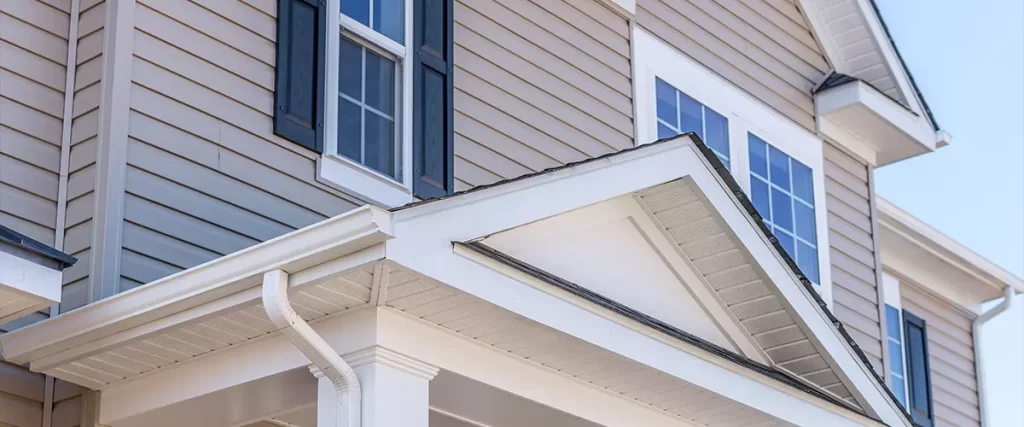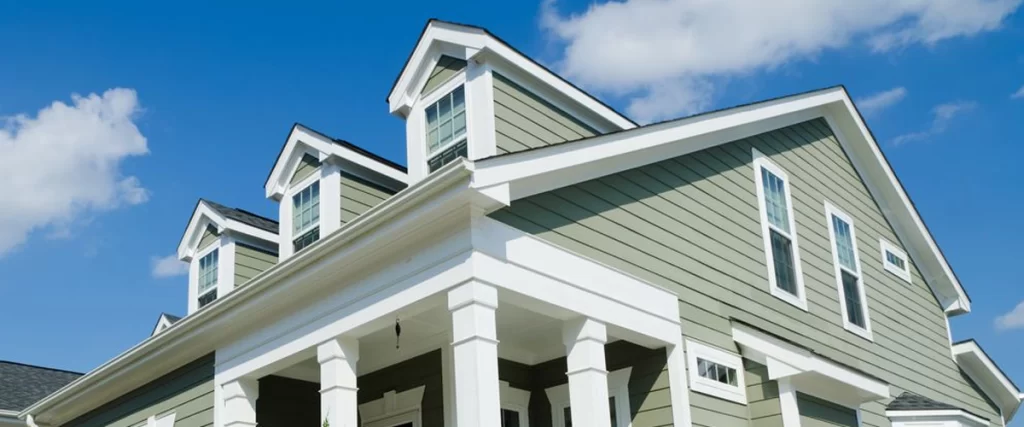When homeowners start comparing siding options, one name keeps coming up: James Hardie. It’s become a trusted go-to for those looking for something long-lasting, low-maintenance, and good-looking. But what are people really saying about it in 2025?
This year, more homeowners than ever have shared their real experiences with James Hardie siding, what they loved, what surprised them, and what they wish they had known. We’ve been listening.

Why Homeowners Continue To Choose James Hardie Siding
There’s a reason so many siding projects now include fiber cement instead of traditional vinyl or wood siding. People are tired of fading color, warping panels, and rot.
James Hardie siding is made from a blend of Portland cement, sand, and cellulose fibers, which gives it strength and stability. That’s the basic explanation. But what stands out to homeowners isn’t the materials, but the results.
Clients often talk about:
- How well the product holds up in Midwest weather
- The clean, solid appearance it gives their home
- The way it mimics wood without the upkeep
- Its resistance to moisture, pests, and fire
- Its ability to hold paint for years without peeling
Many homeowners switch to Hardie board after being frustrated with other siding types. Especially vinyl, which tends to warp or crack in Nebraska’s freeze-thaw cycles. Or wood, which might look beautiful at first, but ends up softening, splitting, or attracting insects.
James Hardie Siding Reviews by Clients in 2025:
We’ve talked to homeowners across Omaha and surrounding areas. They’ve had Hardie products installed recently, or have lived with them for years. Here’s what they’re saying.
“I Didn’t Expect It To Be This Quiet Inside”
One homeowner shared how surprised they were by how much quieter their home became. The thicker profile of fiber cement siding seems to block more outside sound than vinyl ever did. They didn’t expect it, but now they notice it every day.
“The Paint Still Looks Fresh After Four Years”
ColorPlus® Technology is a big reason people choose James Hardie. It’s a factory-applied finish that’s baked on. It resists UV rays, chipping, and peeling better than most paints. Clients are often surprised by how rich and even the color looks, even years later.
“It Was More Expensive Than Vinyl, But I’m Glad I Did It”
Upfront, the James hardie siding cost per square foot can be higher than other siding options. But most clients say it’s worth it. One customer said they were debating between LP SmartSide, vinyl, and Hardie plank. After comparing durability, warranty, and real-world reviews, they went with Hardie—and they’d do it again.
“It Feels Solid—Like Brick, Almost”
That’s a common reaction after installation. The product doesn’t rattle or shift in the wind. Installed correctly, it lays flat and feels substantial. That’s part of the appeal. It isn’t just that it looks nice, it actually makes the home’s exterior feel more solid.
Common Concerns: What You Should Know
Every product has its drawbacks. James Hardie is no exception. We hear about these the most:
- It’s heavy. Installation isn’t a DIY-friendly job. Most homeowners need experienced siding contractors who know the product and follow the company’s installation guidelines. Proper installation matters here, more than with most siding products.
- It requires precision. If the bottom edge is too close to the ground, or flashing is skipped, moisture issues can happen. That’s why Hardie-trained installers are a must.
- It’s not the cheapest. You can expect to pay more than vinyl or lower-end wood siding, though it typically lasts far longer.
Clients who had issues often had one thing in common: it wasn’t installed properly. When it’s done right, most problems never come up.
Why It Holds Up So Well in Nebraska’s Climate
Omaha gets just about every kind of weather. Ice. Wind. Heat. Hail. Some years we see it all. Fiber cement board works in this kind of environment because of how it’s made.
- It won’t warp in the heat like vinyl.
- It won’t rot from moisture like wood.
- It’s resistant to termites, fire, and wind damage.
- It resists moisture, dirt, and damage from UV rays.
Clients often mention they don’t worry anymore about things like hailstorms or wet foundations. If you live near a foundation or shaded wall that stays damp, Hardie board tends to outperform anything else.
Looks That Go Beyond “Siding”
People love how it transforms their home. One customer did siding repair, faded beige vinyl with Hardie lap siding in a rich green tone with white trim. The house looked brand new. Another client went with a cedar-style look but without the upkeep—no staining, no worry about paint bubbling off.
James Hardie makes several fiber cement products beyond basic lap siding:
- Board and batten for farmhouse-style exteriors
- Shingle-style panels for a Cape Cod look
- Smooth or woodgrain finishes to match architectural details
Whatever look someone is going for, they can usually find a Hardie product to match.
Contractors Say the Same Thing
We’ve heard similar things from other installers across the region. Once they’re trained in Hardie siding, they stick with it. The learning curve is worth it, because the results are consistent and reliable.
Siding contractors who follow the specifications from James Hardie Industries don’t usually run into callbacks. That’s a strong sign that the material performs, and that the company manufactures it with long-term results in mind.
Is It Worth the Investment?
Most homeowners aren’t just do siding repair. They’re increasing curb appeal, protecting their walls, and investing in something that doesn’t need attention every few years. When you install fiber cement siding, especially with a trusted team, you’re aiming for the kind of result you don’t have to second-guess.
People who chose Hardie products often say:
- They feel more confident about their home’s exterior
- They’ve stopped worrying about rot, pests, and cracking
- They don’t feel the need to touch up paint every few years
- They’re proud to recommend the product to neighbors
It’s not for every budget, but it is often the last siding project a homeowner ever has to think about.

Choosing the Right Siding Contractor
If you’ve read all this and feel overwhelmed by the choices, the materials, or the idea of comparing siding types, you’re not alone. You could spend weeks learning about Hardie, trying to figure out what fits your house, your climate, and your budget.
Or, you could let us handle it.
We do James Hardie siding installation every day. We know what works in Nebraska. We follow manufacturer instructions to the letter. And we’ll walk you through every step of the process, from material selection to final inspection.
Call us at (402) 651-1493 or Contact us to get started. We’d be happy to talk through your project, answer your questions, and give you a free estimate.
